Onions are an incredibly versatile ingredient used in cooking all over the world. Not only do they add flavor and texture to dishes, but they are also a good source of vitamins, minerals, and dietary fiber. Onions are one of the oldest cultivated vegetables, with evidence of their use dating back as far as 5,000 BC.
In addition to being a well-loved culinary staple, onions have many other fascinating properties that make them worth knowing about. Here is everything you wanted to know about onions.
History and Origin of Onions:
Onions have been an important part of human diets for thousands of years. Originally native to what is now Central Asia, onions were first cultivated in the region that is now Pakistan, Afghanistan, and Iran. Archaeologists have discovered evidence of onions being eaten as far back as 5,000 BC! Onions spread quickly throughout the Middle East, then to India and China, before eventually making their way to Europe.
Types of Onions:
Onions come in several varieties, including yellow, white, and red onions. Yellow or brown onions are the most commonly available and widely used type. They are quite pungent when sliced raw and have a full-flavored sweetness when cooked. White onions are milder in flavor and more tender in texture than yellow onions. They are often used in Spanish, Mexican, and Latin American cuisine. Red onions are slightly sweeter than other varieties and can be eaten raw or cooked.
Nutritional Benefits of Onions:
Onions contain important nutrients, including vitamin C, potassium, fiber, and folate. They also provide antioxidants that help protect against cell damage caused by free radicals. Eating onions regularly may reduce your risk of certain chronic diseases such as heart disease and cancer.
Health Benefits of Onions:
Onions have many health benefits due to their high content of sulfur-containing compounds called thiosulfinates. These compounds act as natural antibiotics and can help fight bacteria that cause common colds, sinus infections, and even food poisoning. Onions also contain a chemical called quercetin, which has anti-inflammatory properties that can help reduce pain and swelling associated with arthritis and other inflammatory conditions.
How to Plant Onions?
Onions are a popular vegetable that you can easily grow in your garden. Planting onions is a simple process and will reward you with a delicious harvest in just a few months.
When to Start Planting Onions:
The best time to plant onion depends on the climate of where you live, but generally, it is about 2 weeks before the last frost date for your area. Spring planting should occur between February and April, while fall planting occurs in August and September.
Where to Plant Onions:
Onions need plenty of suns to thrive, so choose an area of your garden that gets at least 8 hours of direct sunlight daily. The soil should be well-drained, nutrient-rich, and slightly acidic (pH 6.0-6.8). If you are planting in rows, space the plants 4-5 inches apart and space the rows 12-15 inches apart to ensure adequate air circulation around your onions.
How to Plant Onions:
When planting onions, there are two options: growing from seed or using sets (small bulbs). For most varieties of onion, it is best to start with sets as this will give you a head start on germination and produce better yields. To plant sets, push the bulb into the soil about 2 inches deep and cover lightly with soil.
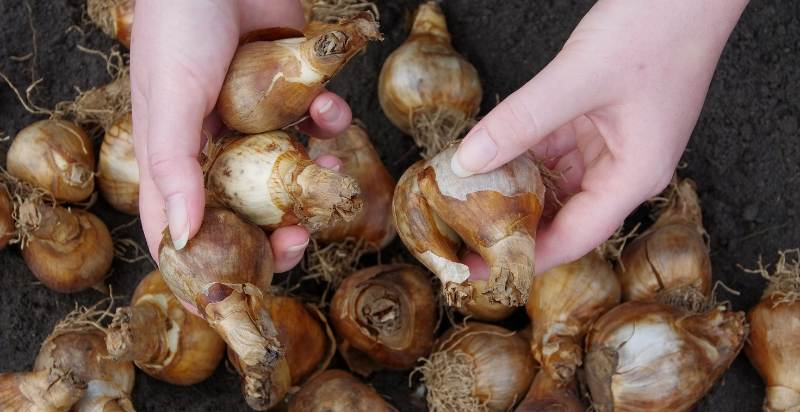
Watering Onions:
Onion plant should be watered regularly throughout their growth cycle. When they reach maturity, they will need more water, so keep the soil moist but not soggy. Adding a layer of mulch around the onions can help to retain moisture and minimize weeds.
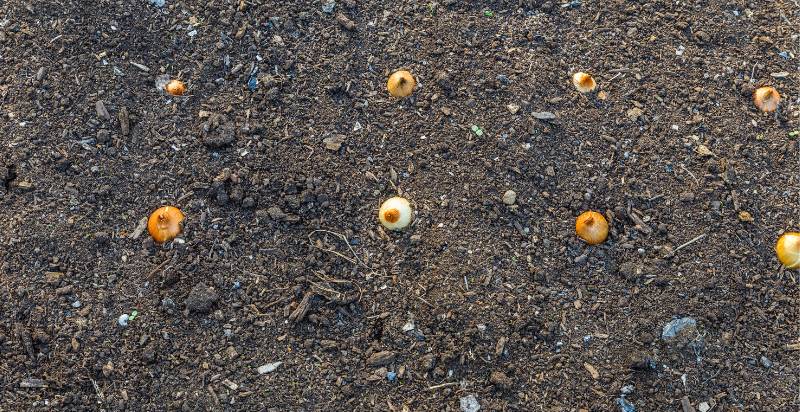
Harvesting Onions:
Onions are ready for harvest when their tops turn yellow and start to fall over. Gently loosen the soil around each onion with a garden fork and carefully lift them out of the ground. Please place them in a sunny location out of direct sunlight and allow them to dry for several days before storing them in a cool place.
Now you know how to plant onion successfully, it’s time to get growing! With proper care, your onion crop will be tantalizingly tasty in no time.
How to Care for Onions?
Once your onions are planted, there is still some work to be done. During their growth cycle, onions need regular weeding, mulching, and fertilizing to produce the best yields. Watering should be done every week, and fertilizer should be applied around mid-season or every 4 weeks with an all-purpose fertilizer.
At harvest time, cut off the tops of your plants just before they turn yellow. Onions should then be left in a cool, dry place for several days until the outer skin has dried and hardened before storing them in a cool and dark location. With proper care and attention, you can enjoy delicious home-grown onions throughout the year!
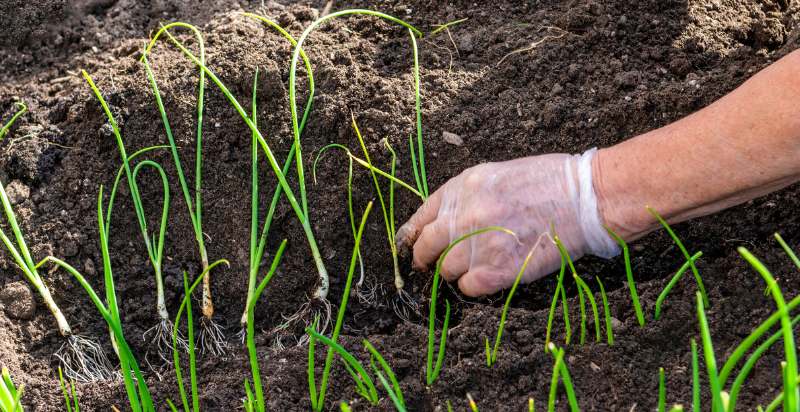
Preventions from Pests and Diseases:
Onions are hardy plants that can fend off most pests and diseases. However, there are a few you should look out for. Onion fly larvae feed on the roots of onion plants, causing damage to the bulbs. To prevent this from happening, regularly check your plants for signs of infestation and use insecticide if needed. Additionally, downy mildew can sometimes be an issue in damp conditions – water carefully to avoid this disease and use fungicides as necessary.
How to Harvest Onions?
When it is time to harvest your onions, there are a few things you need to do:
- Cut away the tops at least three weeks before they are ready. This will allow the onion skin to harden and protect them from rot during storage. Once the skins have hardened, use a garden fork to loosen the soil around each plant and carefully pull out each onion.
- Lay them in a sunny place out of direct sunlight for several days until their outer skins dry completely.
- Store the dried onions in a cool and dark location like a root cellar or cupboard, and enjoy!
You can also try different methods of preserving onions, such as pickling or dehydrating them to enjoy them all year round.
Now that you know how to grow, care for, and harvest onions, it’s time to grow! With the proper attention and care, your onion crop will be tantalizingly tasty in no time. Enjoy the fruits of your labor with delicious home-grown onions thanks to this simple guide on planting onions.
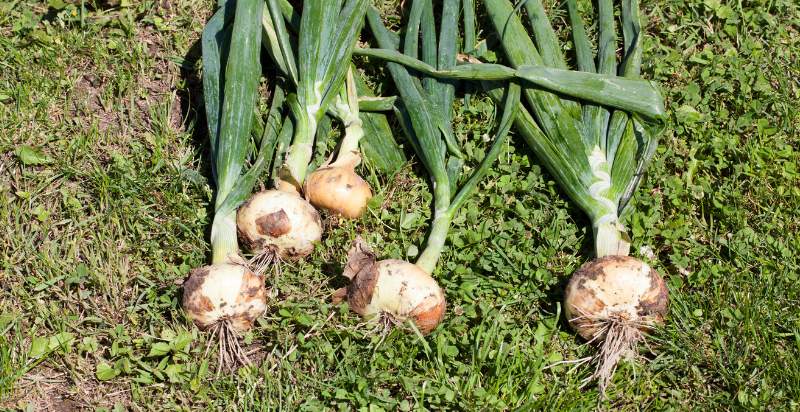
How to Store Homegrown Onions?
Once you have harvested your onions, it is important to store them properly so they will last for months. The best way to store home-grown onions is in a cool and dark place, such as a root cellar or cupboard. Make sure the location has good air circulation and no light exposure. Onions should also be separated from other fruits and vegetables, such as apples, pears, and potatoes, since these release ethylene gas which can cause rotting.
It is also important to ensure that the onions are thoroughly dried before storing them. If you find any soft spots on the onions, remove them immediately, as this indicates that rot may already be setting in. With proper care, your homegrown onions will stay fresh for up to six months.
Now that you know how to grow, care for, harvest, and store onions, it’s time to grow! With the proper attention and care, your onion crop will be tantalizingly tasty in no time. Enjoy the fruits of your labor with delicious home-grown onions thanks to this simple guide on planting onions.
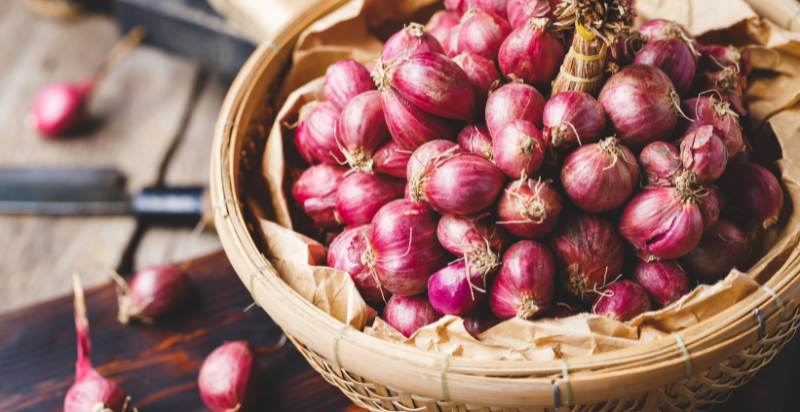
How to Use Onions?
Onions are one of the most versatile vegetables and can be used in countless recipes. They can be eaten raw, cooked, pickled, or roasted, providing a delicious flavor to many dishes. Onions also add texture and crunch to salads, burgers, and sandwiches.
Onions are rich in vitamins A, C, and E and minerals such as iron, magnesium, and zinc, making them an incredibly nutritious vegetable. Additionally, onions contain sulfur compounds that have antibacterial properties, making them beneficial for fighting off infections.
The next time you’re looking for a tasty way to add flavor to your meals or snacks, try incorporating some onions! Whether diced up small into salsa or roasted whole, onions will surely add a pleasant and flavourful kick to your meals.
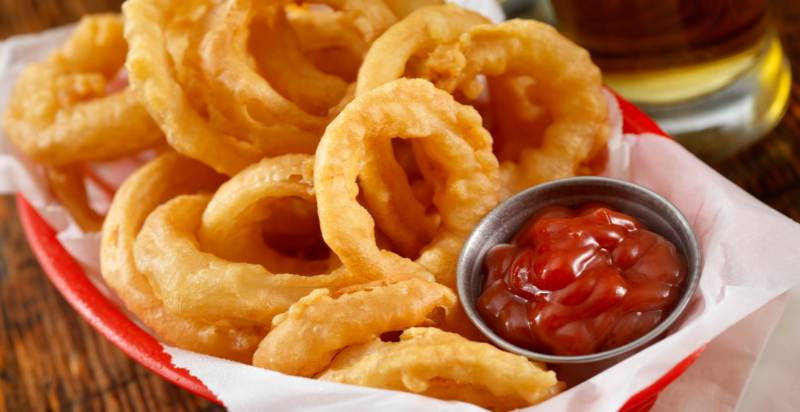
Potential Risks from Onions:
While onions are generally considered safe and healthy, there are potential risks associated with eating them. Onions can cause indigestion in some people due to their high sulfur content. Additionally, onions may trigger allergies or worsen pre-existing respiratory conditions such as asthma. If you have any pre-existing health issues or sensitivities, it is best to consult a doctor before incorporating large amounts of onion into your diet.
In Conclusion:
Onions can be an incredibly flavorful and nutritious part of your diet when consumed in moderation. However, it is important to take precautions if you have any existing medical conditions or allergies that may be affected by eating onions. With the right care and attention, you can successfully incorporate onions into your meals and enjoy your labor’s delicious and nutritious fruits.
Finally, it is important to dispose of any onions starting to go bad as soon as possible. This will help ensure that you don’t accidentally consume rotten onions and prevent any potential food poisoning or illness risk. With the right care and attention, you can grow, harvest, store and use onions in your favorite recipes. Enjoy the delicious flavor and nutrition from homegrown onions today.
- Everything You Wanted to Know About Red Tamarillos - June 2, 2025
- A Guide to Tulips: Everything You Need to Know & More… - June 2, 2025
- Guanabana: Description, Flavor, Benefits, And Uses - May 27, 2025

56 thoughts on “Growing Onion: How to Plant, Care, and Harvest Onion”
Comments are closed.